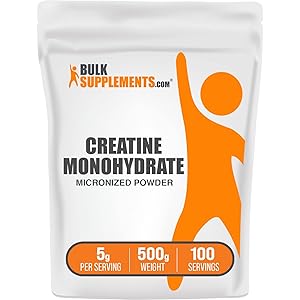Vital Proteins Collagen Peptides Powder Advanced with Hyaluronic Acid & Vitamin C - 20oz Collagen Protein, Unflavored, 28 Servings
$42.99 (as of May 19, 2025 11:59 GMT +00:00 - More infoProduct prices and availability are accurate as of the date/time indicated and are subject to change. Any price and availability information displayed on [relevant Amazon Site(s), as applicable] at the time of purchase will apply to the purchase of this product.)Understanding Bioavailability of Nutrients
The bioavailability of nutrients refers to the proportion of nutrients that are absorbed and utilized by the body after consumption. This concept is crucial in nutrition science as it determines how effectively our bodies can use the vitamins, minerals, and other essential compounds found in food. Factors influencing bioavailability include the source of the nutrient, the presence of other dietary components, and individual physiological conditions.
Factors Affecting Bioavailability
Several factors can significantly impact the bioavailability of nutrients. For instance, the chemical form of a nutrient can determine how well it is absorbed. Some nutrients are more bioavailable in their natural food sources compared to synthetic supplements. Additionally, the presence of other nutrients can enhance or inhibit absorption; for example, vitamin C can enhance iron absorption, while calcium can inhibit magnesium absorption.
Food Matrix and Bioavailability
The food matrix, which refers to the physical and chemical structure of food, plays a vital role in nutrient bioavailability. Whole foods often contain a complex interplay of nutrients, fibers, and phytochemicals that can either facilitate or hinder nutrient absorption. For instance, the bioavailability of carotenoids from vegetables is significantly increased when consumed with fats, as they are fat-soluble compounds.
Digestive Health and Nutrient Absorption
The health of the digestive system is paramount for optimal nutrient bioavailability. Conditions such as celiac disease, Crohn’s disease, and irritable bowel syndrome can impair nutrient absorption. Moreover, the gut microbiota, which consists of trillions of microorganisms, can influence the bioavailability of nutrients by breaking down complex food components and producing beneficial metabolites.
Age and Bioavailability
Age is another critical factor affecting the bioavailability of nutrients. Infants, children, and the elderly may have different absorption rates and requirements for certain nutrients. For example, older adults often experience a decline in digestive function, which can lead to decreased bioavailability of essential vitamins and minerals, necessitating dietary adjustments or supplementation.
Impact of Cooking and Food Preparation
Cooking methods can also influence the bioavailability of nutrients. Some cooking techniques, such as steaming or boiling, can enhance the bioavailability of certain nutrients by breaking down cell walls and making them more accessible. Conversely, overcooking can lead to nutrient loss, particularly for heat-sensitive vitamins like vitamin C and some B vitamins.
Bioavailability of Micronutrients
Micronutrients, including vitamins and minerals, exhibit varying degrees of bioavailability. For instance, the bioavailability of iron from plant sources (non-heme iron) is generally lower than that from animal sources (heme iron). Understanding these differences is essential for formulating dietary recommendations, especially for populations at risk of deficiencies, such as vegetarians and pregnant women.
Supplementation and Bioavailability
When it comes to supplementation, the bioavailability of nutrients can vary widely among different products. Factors such as the formulation, presence of other ingredients, and the delivery system (e.g., tablet, capsule, liquid) can all affect how well a nutrient is absorbed. It’s crucial for consumers to choose high-quality supplements that ensure optimal bioavailability to meet their nutritional needs.
Research and Future Directions
Ongoing research into the bioavailability of nutrients continues to unveil new insights into how we can optimize nutrient absorption through diet and lifestyle choices. Advances in nutritional science, including the study of nutrigenomics, are helping to personalize dietary recommendations based on individual genetic profiles, potentially enhancing the bioavailability of nutrients for different populations.


